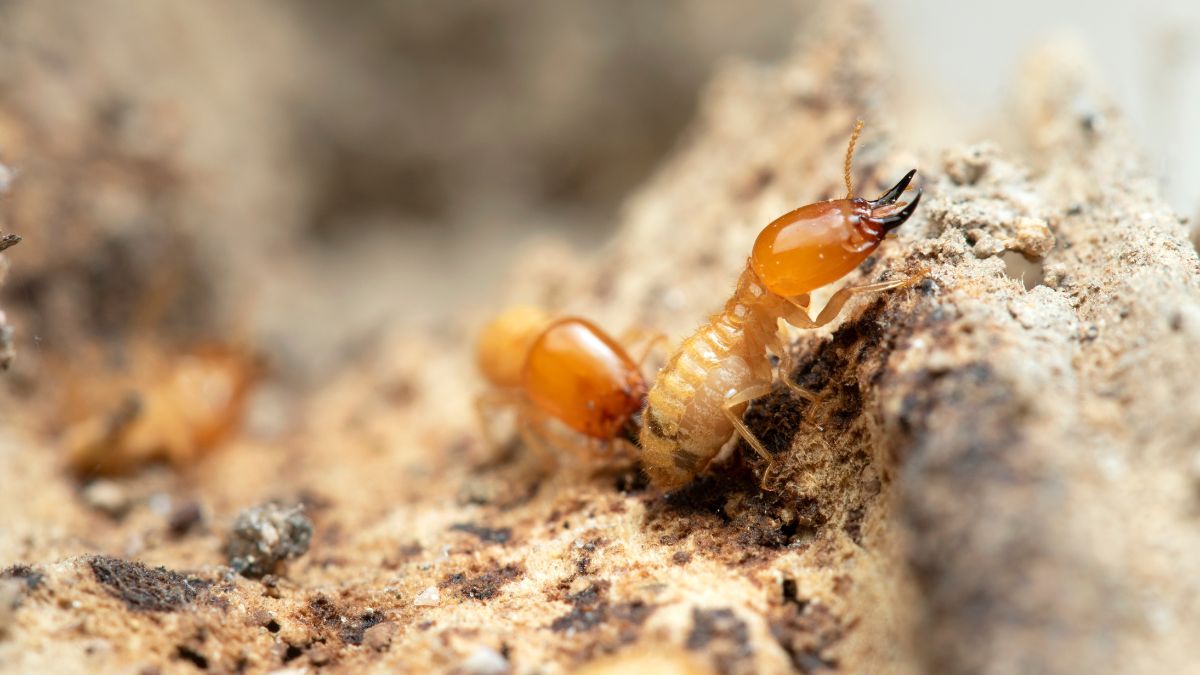What are the termite signs in your house that would tell you are being invaded by them? In this article, we’ll try to investigate these signs so you can prepare in advance and do the immediate action to avoid further damage to your property.
There are about 2000 species of termites, commonly referred to as white ants. However, they do not share any connection with ants. Termites come in hundreds of different varieties.
Several species recycle dead and decayed wood, while others eat grasses, while only a few damage young woods.
Subterranean termites that live below ground roam the soil constantly to search for food resources and assess them based on size and quality. Wood’s main component, cellulose, is what they are attempting to find. This insect is essential to the recycling process for plants and trees because it feeds on fallen branches or dead trees.
The termites can be very destructive to the structure of a house as well, often causing extensive damage without showing any signs of their activity.
For many termites, the colony is vast, with thousands of individuals, if not millions, working tirelessly for survival. Here are 9 termite signs that you will tell you that they are slowly tearing your house apart from the inside.
Termite Signs
Even if they are not easy to spot, there are different ways to detect the presence of termites in your home and here are 9 termite signs you should be wary of:
1. Earth tunnels:
Also called “cords,” these earth tunnels are visible on the surface of infested rooms. They serve as paths to take to reach and supply the colony.
2. The “mud” or excrement:
The insects eject their droppings through a small hole they have made in the wood, leaving a small pile of tiny logs (also called “mud”), easy to spot with the naked eye.
3. Sawdust:

Another termite sign is the presence of sawdust at the foot of the contaminated pieces is indicative of the existence of insects in the piece of wood, which becomes brittle and cracked.
4. Cracks and galleries:
The xylophagous insects devouring the wood create cracks and veritable galleries (tunnels and holes) in the room concerned.
5. The noise:
The sound emitted by white ants at work is very characteristic. It looks like a regular clicking sound from contaminated wood.
6. The porosity of wood:

Infested wood becomes porous, and when you push your finger into it, it penetrates quickly, like moss.
7. Recalcitrant openings:
Contaminated window and door frames tend to swell, making opening and closing more difficult.
8. The hollow sound:
When you tap on an infested piece of wood, the sound that emerges is hollow, as if you were tapping on paper.
9. Flying termites:

Next on our list of termite signs are flying insects. An invasion of flying insects (male and female) is the sign of an upcoming swarming and the constitution of a new colony.
The different kinds of termites:
Also called “white ants,” these termites present in the south of France are of two kinds:
Underground insects:
They form their termite mounds most often in the ground. These are populous colonies that can include up to 5 million individuals spread over a territory that can reach 600 m2. The underground white ants carry out earthy constructions (termite mounds, tunnels, etc. ).
Dry wood insects:
They form colonies of a few dozen to a few hundred individuals. These colonies are installed directly in the pieces of wood that the insects consume (they do not make constructions). These do not come out of the components of wood they occupy. They reject their droppings through perforations in the wood.
Termite mounds are made up of either :
By swarming (new kings and queens fly out of the colony in the spring to form new colonies).
By budding (isolation of part of the colony: transport by humans or animals).
Since termites shy away from light and like dark, damp places, they infest and therefore consume a piece of wood from the inside to the outside. It means that when we manage to detect their presence (holes, cracks, excrement, etc.), it means that the insects have already been there for a very long time!
How to exterminate these termites?
Before any radical extermination intervention for these invading insects, a preliminary diagnosis should be carried out by a specialist or a qualified and experienced wood treatment professional.
The pest control company will use powerful and highly effective chemicals or set traps to intercept the colony (s). Several anti-termite treatment techniques are then used, depending on the degree of infestation:
The traps:
If you saw one of these termite signs, You need to put traps that contains a bait. The insects are attracted by the product (or the natural bait), which is there, ingests it, and returns to contaminate the whole colony to exterminate the other individuals.
Spraying:
The technicians spray, as a preventive measure, a product on the infested parts. But spraying remains a surface treatment and is only suitable for homes with a bit of infestation or at the start of an infestation.
Injection:
Technicians perforate contaminated pieces of wood, place injectors every 20 to 30 cm, and inject a powerful biocidal product into the holes made to treat the piece as profoundly as possible.
Chemical barrier:
Termite professionals create a chemical barrier around the home, which helps eliminate termites present in the house while protecting against possible new infestations.
Final Words:
If you happen to saw one or two of the termite signs mentioned above in your house while cleaning or decluttering, you need to act immediately and hire an expert to exterminate them before they take over your house.
- Key Strategies to Mitigating risks in Rental Property Investments
- The Essential Role of Property Management Companies
- The Ultimate Guide to Handling Evictions and Tenant Conflicts
- The Hidden Impact of Taxes and Insurance Costs
- Protect Your Property: Essential Practices for Effective Tenant Screening

